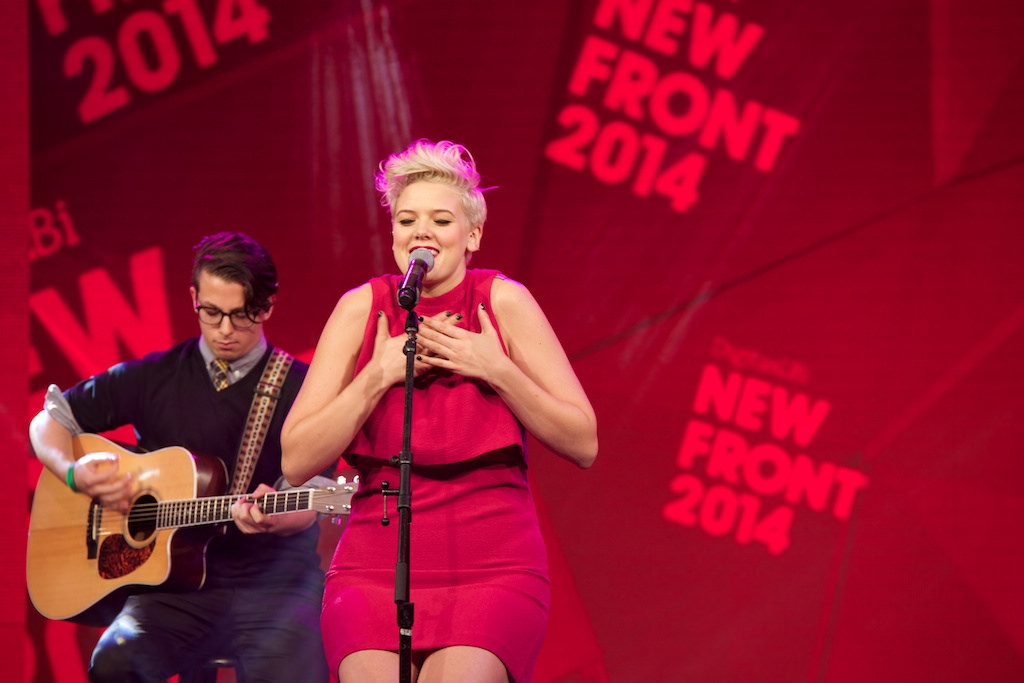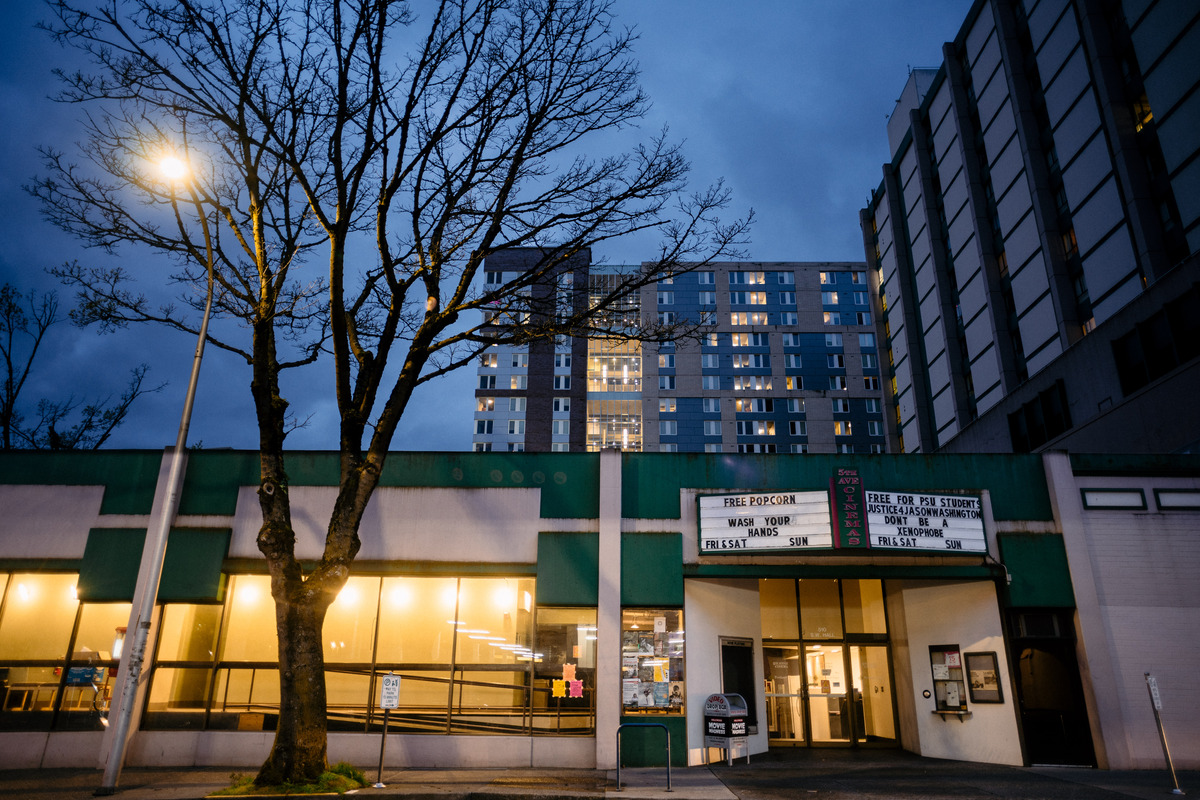First Thursday, last Thursday, everyday’s an art day!!!!
First Thursday highlights
What is probably the most anticipated gallery show of July is the Mark Woolley Gallery’s exhibition of work by Walt Curtis. Curtis, who years ago dubbed himself “street-poet laureate” of Oregon, presents “primitive” works in acrylic on wood. The tribal-inspired designs speak to the shared experience of all humans, and are on display on the occasion of the poet’s 70th birthday July 4. Also on display are the mixed media works of Anne Grgich. The Woolley is located at 120 N.W. 9th, suite 210.
The Margo Jacobsen Gallery, 1039 N.W. Glisan, will exhibit the works of Richard Morhous, whose acrylic on paper works contain heavy, strong linework and forthwright color. The artist’s work contains elements of impressionism and realism as everyday objects are given a meaning beyond the simple, utilitarian context in which the viewer is used to seeing them.
Gallery Nil, 328 N.W. Broadway #114, will feature fashion inspired by architecture in “Out of Uniform,” which promises to be more than the average Portland fashion show.
Just closed
The Portland Independent Salon held its closing reception at Bollenbach Art Labs on Friday, June 29. Unfortunately, the project did not live up to its stated goals. To show only underrepresented, “underground” work at a warehouse in Southeast Portland may seem a good idea on paper, but in practice came off as misguided and immature.
The show was “not curated or juried,” according to a press release, rather the idea and wall space were offered on a “word of mouth” basis. While the approach seems at first laudable (rise up all ye and break the chains of the gallery system!) the viewer is left with an exhibit comprised of works by those “in the know.”
The P.R. material’s emphasis on the word “scene” belies a divisiveness sensed in the show’s title: that these “independent” artists are simply members of a small, cliquish “scene” who have lent their names to a spiteful attack on curators and jurors.
Another problem arises when we realize that a full one-fourth of the artists on display are not wholly independent, but are in fact represented by Pearl district galleries ���� those evil bastions of curators and jurors themselves.
There were highlights though. The ever-consistent Zefery Throwell’s single work on display was perhaps the easiest-to-read piece of his this viewer has seen, but stood out among the other amateurish work. Other highlights included Ben Hopson’s sculptures and Elizabeth Obert’s mixed-media work.
Currently showing
One group show that fulfills its promise is “Stones, Nests & Shadows” at the Kindred Spirits Gallery, 1468 N.E. Alberta, through July 22. On display are works by Margo McCafferty, Lillian Pitt and Tom Rudd.
Pitt’s mixed media sculpture evokes both the urban environment outside of the gallery and her American Indian heritage. These are values ever-apparent in America’s new multicultural communities, and defy the cries of “gentrification” that have stigmatized artistic populations in neighborhoods like Northeast Portland and San Francisco’s Mission District.
McCafferty’s work in acrylic, oil, and dry pigment on panel presents a dark vision of nature ���� gnarled tree stumps and hornets’ nests are rendered in brooding grey, brown and black tones. These seem explained by her “Extinction Series,” which is comprised of small, dark works that focus the viewer’s attention on an envelope at the bottom of each panel. The viewer understands that each envelope carries a message of extinction, a sentence, if you will, to be disclosed at a later date.
Rudd’s marble, limestone and andesite sculptures contrast the nature of human existence, while his “Koi Pond” of sand at the center of the gallery space quite nicely unifies all of the artists’ works.
Just up the street, at 2315 N.E. Alberta, is the Our Dream Gallery’s Alberta Arts Pavilion. This new space is committed to displaying the works of African Americans from Portland and beyond. Highlights here include Solongo Lee’s color photos with wood, steel, and acrylic. This Oakland native’s work evokes slavery in all of its horrific imagery ���� ropes, chains and fire symbolize the anger burned into the souls of all African Americans.
More social commentary comes in Lee’s hand-tinted black and white photographs on color paper. These works focus on a people’s need for ceremony, as in the colorful and powerful “Prayer Meeting,” which depicts a group of African American churchgoers carrying candles in an act of faith that the viewer assumes is a futile attempt to reconcile American existence.
Also on display are Cynthia Braun’s works in oil and encaustic on canvas. The artist’s interest in art therapy shows in the calming effect brought on by her work. The muted browns and reds evoke not a rustic, but a rusty sense of existence that transports the viewer in to a contemplative repose. These works will also be on display through July 22.
Moving to the Pearl; Savage Gallery, 416 N.W. 10th Ave., recently opened an exhibit of works by Kristy Edmunds and Heidi Schwegler. Schwegler’s light boxes contrast standards of beauty and the Western ideal with images from medical texts. Also on display are pieces that seem taken directly from contemporary fashion and ad design ���� one would not surprised to find her designs on T-shirts found at, say, Retread Threads. The viewer is left asking whether the artist’s commentary is on the fashion industry itself, or is in question of her own fascination with same.
Edmunds’ work presents a challenge of its own. The PICA founder’s monoprints took only 12 minutes each to to produce, according to the artist’s statement, and the viewer wonders if the images would be more inspiring given more time and thought.
More interesting is what Edmunds has applied directly to the walls themselves. In charcoal are grouped symbols that Edmunds claims come from a written code developed over the course of her childhood. The irony lies in the graffiti-like look and feel of the “text,” which is methodically and well-placed on the wall. Repose is found easily in the tribal-like scrawls which are reminiscent of Sanskrit or Hebrew writing, and remind the viewer of the beauty of which graffiti is capable, but in a far-from-the-street setting. Schwegler and Edmunds will be featured at Savage Gallery through August 4.
Ten area photographers are currently showing works at Disjecta, 116 N.E. Russell, (503) 493-7353. “One Hundred Photos Gallery” will be up through July and offers the viewer a wide spectrum of works by both young and old photographers working in both black and white and color. It’s worth checking out.



